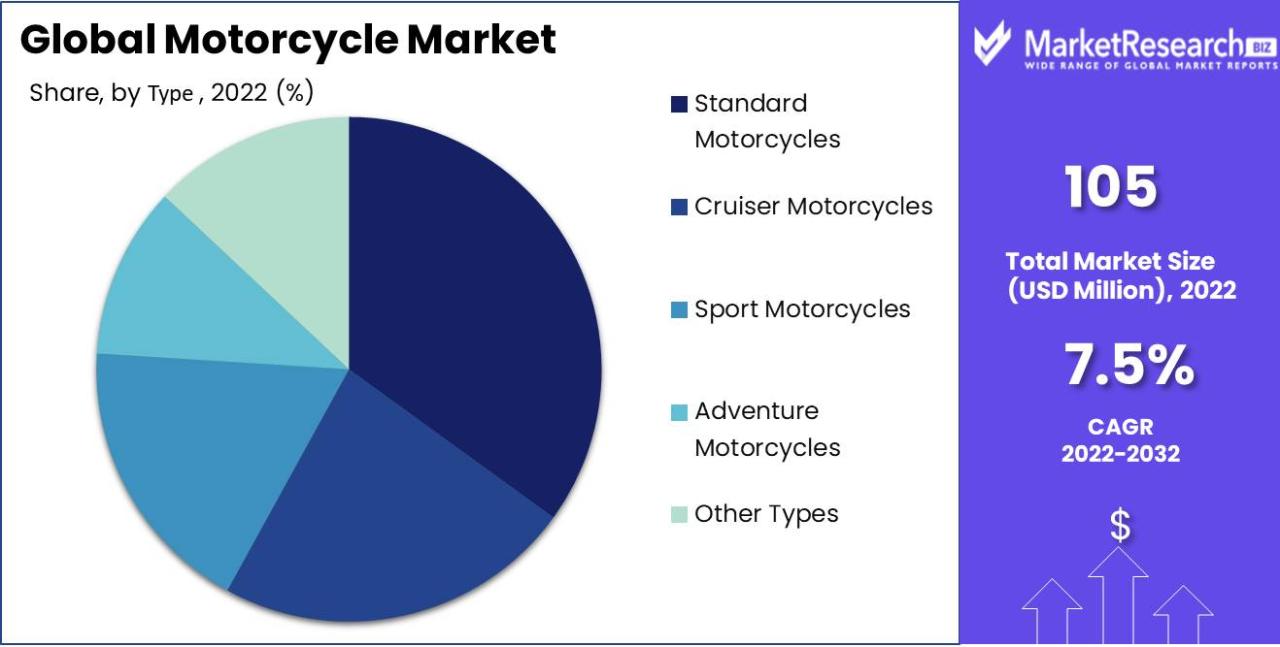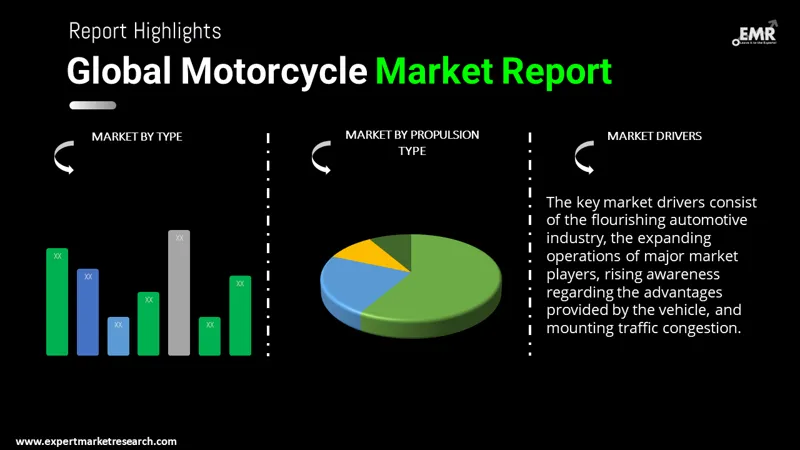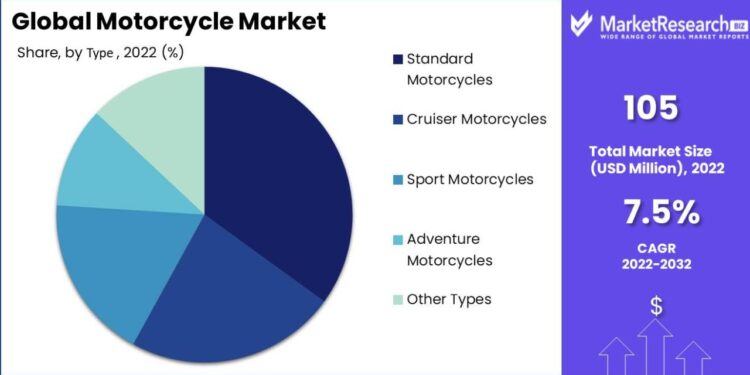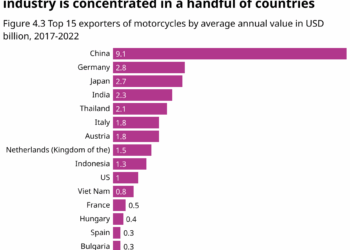Delve into the intricate world of regional motorcycle market segmentation, where demographics, psychographics, and behaviors intertwine to shape consumer preferences. This captivating journey will shed light on how manufacturers and marketers navigate diverse regional markets to tailor their strategies effectively.
Regional Motorcycle Market Segmentation

Market segmentation in the context of the regional motorcycle market involves dividing the market into distinct groups of consumers with similar characteristics and behaviors. This segmentation allows manufacturers and marketers to tailor their products, messaging, and strategies to meet the specific needs and preferences of each group.
Demographics
Demographic segmentation categorizes consumers based on factors such as age, gender, income, occupation, and education level. For example, in a regional motorcycle market, manufacturers may target younger, urban consumers with higher disposable incomes for sportier and more expensive models, while focusing on older, rural consumers with lower incomes for practical and affordable options.
Psychographics
Psychographic segmentation looks at consumers' lifestyles, values, attitudes, and interests. In a regional motorcycle market, this could mean targeting adventure-seeking consumers who enjoy outdoor activities and value freedom and self-expression with rugged off-road models, while appealing to safety-conscious consumers with families through reliable and comfortable commuter bikes.
Behavior
Behavioral segmentation considers consumers' purchasing behavior, usage patterns, brand loyalty, and benefits sought. Motorcycle manufacturers may segment the market based on usage frequency, brand preferences, and reasons for purchase. For instance, targeting loyal customers who prioritize performance and speed with premium sports bikes, while focusing on occasional riders looking for fuel efficiency and affordability with entry-level models.Understanding regional market segments is crucial for motorcycle manufacturers and marketers to effectively reach and engage their target audience.
By tailoring products, marketing messages, distribution channels, and pricing strategies to specific segments, companies can increase customer satisfaction, brand loyalty, and overall profitability in the competitive regional motorcycle market.
Demographic Segmentation
Demographic segmentation plays a crucial role in understanding the regional motorcycle market, as it divides the market based on factors such as age, gender, income, and education. These demographic factors influence the purchasing behavior and preferences of consumers, allowing companies to target specific customer groups within a region more effectively.
Age
Age is a key demographic factor that impacts the segmentation of regional motorcycle markets. Younger consumers may prefer sportier and more stylish bikes, while older consumers might prioritize comfort and safety features. By understanding the age demographics of a region, companies can tailor their marketing strategies and product offerings to appeal to different age groups.
Gender
Gender also plays a role in demographic segmentation within the motorcycle industry. Traditionally, motorcycles have been associated with male riders, but there is a growing trend of female riders in recent years. Companies can use gender demographics to develop motorcycles that cater to the specific needs and preferences of male and female riders alike.
Income
Income levels greatly influence the purchasing power of consumers within a region. Higher-income individuals may be willing to invest in premium motorcycles with advanced features, while lower-income individuals may opt for more budget-friendly options. Demographic segmentation based on income helps companies price their motorcycles competitively and target the right customer segments.
Education
Education levels can also impact the segmentation of regional motorcycle markets. More educated consumers may value factors such as sustainability, technology, and innovation in their motorcycle purchases. Companies can leverage education demographics to develop marketing campaigns that resonate with well-informed consumers and highlight the unique features of their motorcycles.
Regional Contrasts
Demographic segmentation strategies vary across different regions in the motorcycle industry. For example, in urban areas with a younger population, companies may focus on promoting sleek and fuel-efficient motorcycles for daily commuting. On the other hand, in rural areas with an older demographic, companies may emphasize durable and off-road motorcycles for recreational purposes.
Understanding these regional contrasts is essential for effectively targeting specific customer groups and maximizing sales in different markets.
Psychographic Segmentation
Psychographic segmentation is the division of a market based on the psychological characteristics, lifestyle choices, values, attitudes, interests, and behaviors of consumers. This approach helps marketers understand the motivations behind purchasing decisions and tailor their strategies to meet the specific needs and preferences of different consumer groups.
Lifestyle Choices Impact on Psychographic Segmentation
- Motorcycle enthusiasts who value adventure and thrill-seeking experiences may prefer high-performance bikes for off-road or racing activities.
- Commute-focused riders who prioritize fuel efficiency and practicality might lean towards economical and reliable models for everyday use.
Values and Attitudes Impact on Psychographic Segmentation
- Consumers who prioritize eco-friendliness and sustainability may opt for electric motorcycles or models with low emissions to align with their environmental values.
- Riders who value tradition, heritage, and craftsmanship may be drawn to classic or vintage motorcycle brands that reflect timeless design and quality.
Examples of Psychographic Segments in Regional Markets
- In urban areas with a young, tech-savvy population, targeting millennials who value innovation and connectivity can lead to the promotion of smart motorcycles with advanced technology features.
- In rural regions where community and family values are prominent, emphasizing the reliability and safety aspects of motorcycles can resonate with consumers who prioritize these attributes.
Behavioral Segmentation
In regional motorcycle markets, behavioral segmentation plays a crucial role in understanding consumer buying behavior. By analyzing usage patterns, brand loyalty, and purchase occasions, companies can tailor their marketing strategies to effectively target different consumer segments.
Usage Patterns
- Motorcycle companies can segment their market based on how often customers use their bikes, whether it's for daily commuting, leisure rides, or long-distance travel.
- For example, a company may offer different models targeted at commuters with fuel-efficient features, while also catering to adventure riders with more rugged and off-road capabilities.
- By understanding these usage patterns, companies can position their products and services to meet the specific needs of each segment.
Brand Loyalty
- Behavioral segmentation also involves identifying customers who exhibit brand loyalty towards a particular motorcycle brand.
- Companies can leverage this information to create targeted loyalty programs, exclusive offers, and personalized communication to retain loyal customers.
- For instance, Harley-Davidson has successfully built a strong brand community by organizing events, rallies, and experiences that resonate with their loyal customer base.
Purchase Occasions
- Segmenting consumers based on purchase occasions involves understanding when and why customers buy motorcycles.
- Companies can tailor their marketing campaigns around seasonal promotions, special events, or milestone celebrations to attract customers during specific purchase occasions.
- For example, Yamaha's "Rev the Streets" campaign targeted young urban riders during summer months, emphasizing the joy of riding in the city.
Final Thoughts

In conclusion, regional motorcycle market segmentation is not just a strategy but a key to unlocking the hearts of customers across different regions. By understanding the nuances of market segmentation, businesses can rev up their success and ride towards sustainable growth.
Key Questions Answered
How does demographic segmentation impact regional motorcycle markets?
Demographic factors like age, gender, income, and education play a vital role in segmenting regional motorcycle markets, allowing businesses to target specific customer groups effectively.
What is the significance of behavioral segmentation in the motorcycle industry?
Behavioral segmentation helps predict consumer buying behavior and refine marketing campaigns based on usage patterns, brand loyalty, and purchase occasions, leading to more targeted and successful strategies.











